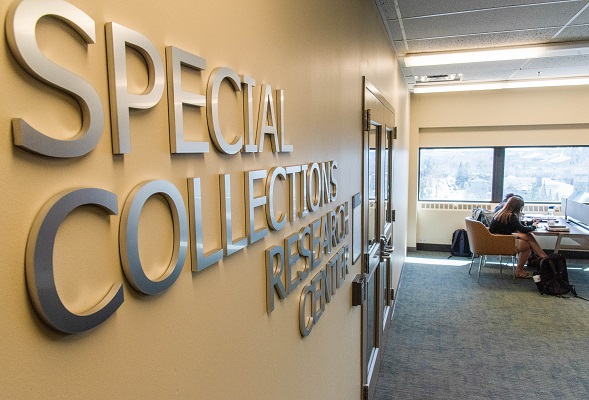This collection details the correspondence and writings of Louis J. Berger, an avid bicycling journalist and enthusiast in the 1880s and 1890s. The collection pimarily consists of his correspondence, most of which is related to bicylicing ethusiasts and cycling clubs. The Bicycling series relates to cycling clubs and magazines, as well as newspaper clippings, song lyrics, and bicycle part receipts. Berger himself worked as the editor for the "Bearings" bicycling magazine in the early 1880s, and as the editor for "Cycling Life" after moving to Chicago in 1887.
The collection is divided into three series: Correspondence, Bicycling, and Personal Clippings and Pamphlets.
The Correspondence series (0.7 linear feet, 1882-1898) contains the bulk of the collection. The correspondence is arranged in alphabetical order by correspondent. The majority of the correspondence is to L. J. Berger. There is a note, "includes outgoing," if letters from Berger to the correspondent are included. In general, there is one letter from each correspondent.
The majority of the correspondence is related to bicycling, either the cycling clubs of which Berger was a member or the cycling magazines where he served as an editor and correspondent. The correspondents range from business acquaintances to good friends of Berger and include editors and writers for sports magazines, officers of the League of American Wheelmen (L.A.W.) and other bicycling clubs, individuals involved in the manufacturing industry related to bike production and cycling enthusiasts.
Correspondence from bicycling clubs and bicycling enthusiasts discuss road conditions and routes, compare bike models, describe club events and travels and analyze club election politics. Two of the more frequent correspondents are Thomas White (Illinois) and James W. Neil (Missouri). A portion of the letters discusses the L.A.W. organization, events and the politics associated with officer elections, most notably from William M. Brewster, E.A. Clifford and Isaac B. Potter..
Correspondence related to the cycling magazines typically discusses obtaining correspondents across the country, the topics they should write on and negotiations of payment. Correspondence includes Berger's efforts to obtain facts for articles and direct correspondents as well as the reactions of readers to the magazines. Berger was an outspoken editor and some of the reader response is in reaction to his criticism of their company or organization. L. J. Berger also wrote road books for bicyclists, and some correspondence concerns road conditions in Missouri for his book.
Bicycling (11 folders, 1885-1941) includes papers related to cycling clubs as well as a letter to Cycling Life protesting an editorial, a note on Bearings finances, a few newspaper clippings with images of bicycles, song lyrics for biking songs and receipts for bicycle parts.
The three cycling clubs represented in the collection are the Chicago Cycling Club, the Missouri Bicycling Club, and the St. Louis Ramblers. For the Chicago and Missouri clubs there are announcements for meetings, membership lists and receipts for membership dues. The majority of the material is related to the St. Louis Ramblers and includes meeting minutes, financial statements, correspondence from when L. J. Berger was the secretary and circular letters from the 48th annual meeting of the St. Louis Cycling Club that outline the history of bicycling in St. Louis in the 1870s and 1880s and discuss the changes in bicycling up until the time of the meeting in 1935. Personal Clippings and Pamphlets (1 folder, 1916-1922) contains materials collected by Berger that are not directly related to bicycling. The topics include motorcycles and automobiles, engine technology, phonographs and how to learn shorthand.
